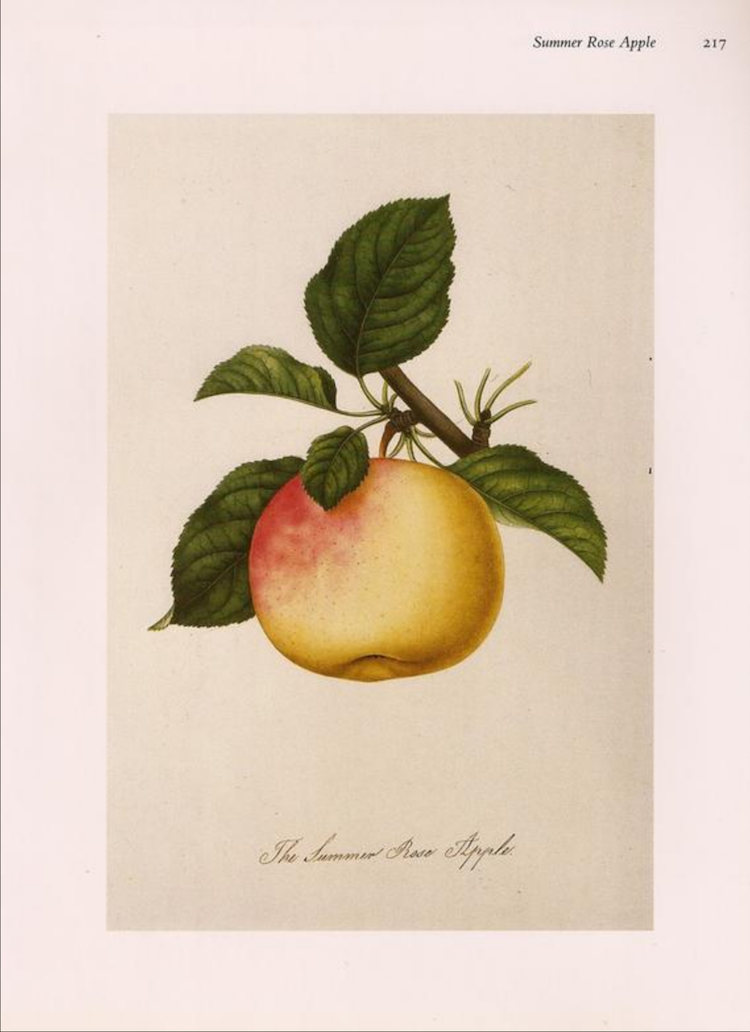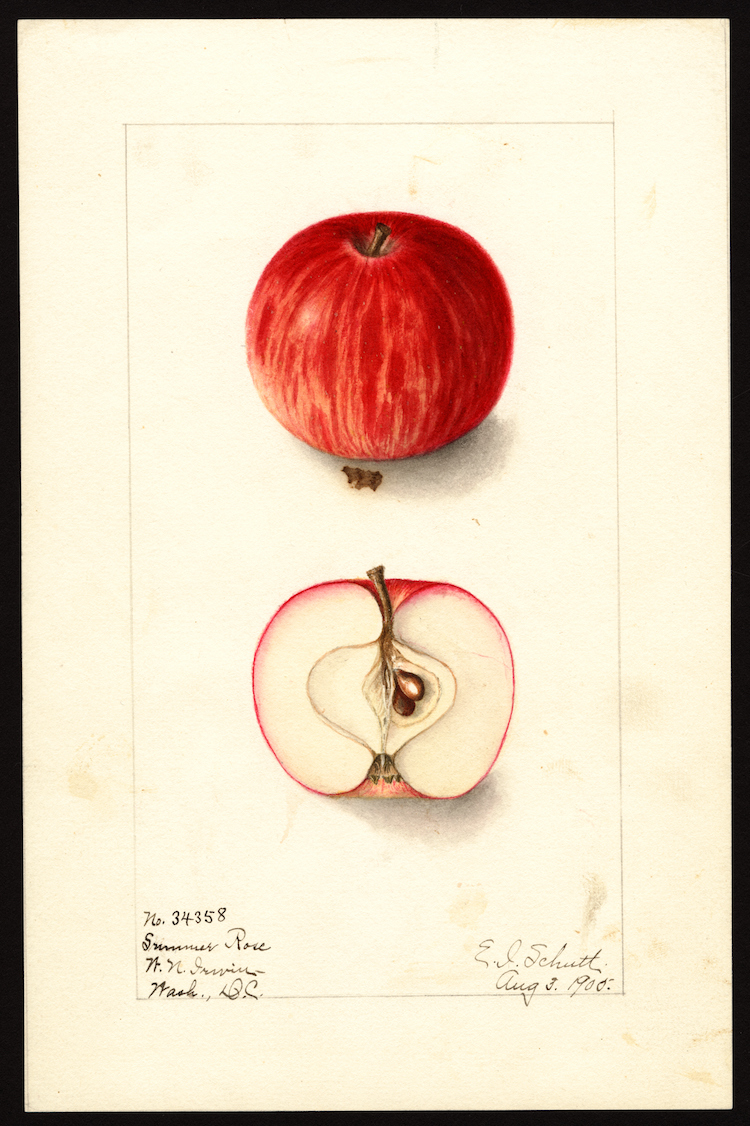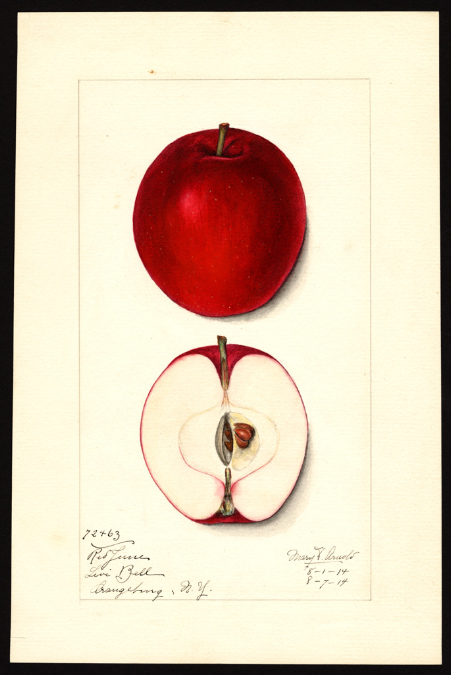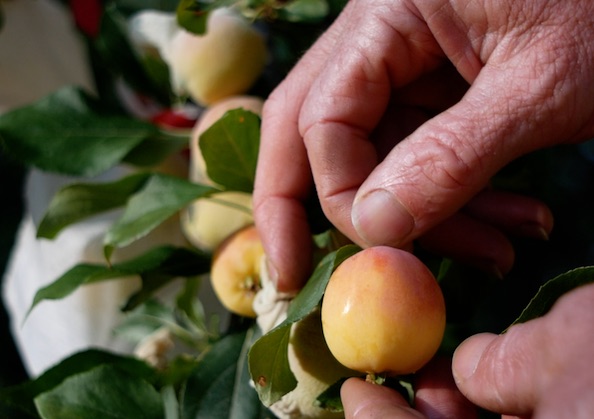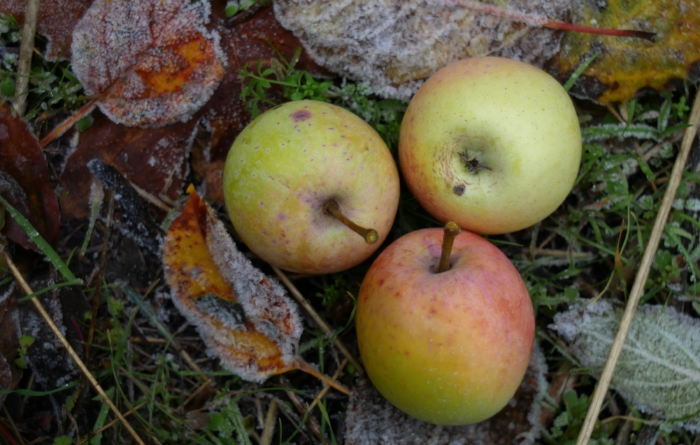It is the last third of July and I have 5 apple varieties ripe here. Typically early apples are thinly flavored, not overly sweet, decline rapidly once picked and best for cooking. Before grocery stores and regular international shipping, early apples were probably a big deal. By summertime, old apples in storage, if any remain, are pretty sad by comparison. Early summer fruits would mean truly fresh fruit gracing the kitchen again. A couple of these stand out as worth eating out of hand too. Apples will ripen in June in some climates, but not mine. As much as people may think we have a salubrious, warm climate, it cools off at night, which typically stops things from developing as rapidly as they might in uniformly warm summer areas.
July Red: July Red is the first to ripen here, but it also has a very long ripening season, of probably 2 to 3 weeks. The quality has improved as the season progresses. The flavor is very nice. Even in the past few days since shooting the video on tasting these apples, I’ve had some specimens that are the best I’ve tasted, and which I would rate as very good. They have also gotten sweeter. Others are not good at all, so it is highly variable and fragile. The ripeness window is short before it softens and goes off. It is variable in size but ranging to large. The flesh is tender and coarse, without much crunch or crispiness, but in no way offensive. It is pretty juicy too. I suspect the juice would be very good, but the texture would make it hard to squeeze in a press. July Red was developed by a breeding program in New Jersey and released in 1962. It is also in the ancestry of Williams’ Pride, an excellent summer apple. The tree is a tip bearer with some spurs, but should definitely be pruned as a tip bearer.
Early Harvest: Early drop is more like it. This one caught up to July Red and dropped all the fruit at once. It is not flavorful, soft and really just not worth eating out of hand. It is listed commonly as dessert and cooking, but here it is not worth eating. It is always possible that mine is mislabeled, but fruit descriptions and results can sometimes be radically different depending on zone and culture. This is a very scabby apple.
Summer Rose: Very similar in appearance to Early Harvest, to the point that I would suspect they might be related. I found several watercolors, one of which is a dead ringer for my fruits as you can see, and the others are a striped apple that is very different. It seems to ripen a bit later though. Very similar in character to early harvest as well. it also gets scab badly, though maybe not at the very worst level.
This Summer Rose looks remarkably like the one I have.
Clearly another apple altogether.
Summer rose. Very scab susceptible.
Red Astrachan: Does not live up to it’s reputation here and never has in around 10 years of fruiting. It is thinly flavored, soft and unremarkable in every way. Tim Bates of the apple farm says it makes great apple sauce. I made some this week and it’s good for sure, but not the best I’ve had or anything. It is the best thing I’ve found to do with them so far. It is not sweet, so lots of sugar required.
Red Astrachan
A watercolor painting of this apple from Early August 1914 under the name Red June. It has the same red flesh staining in the same location right around the calyx tube on the bottom end. The shape is very similar to those growing here.
Carolina Red June: An old heirloom from the south alleged to date from before 1800. This apple has some nice flavor going. Again tender fleshed. It is worth eating out of hand and the flavor is pleasant if polite in mine. I’m hoping this year it will improve over the season as it is a gradual ripener with a long season. The apples are quite small and very red. The red pigment extends into the stem and into the flesh a little bit. That could make it a candidate for breeding early red fleshed apples, along with Williams’ Pride. This one is scabby, but not horrible. I don’t have a full sized tree, so it’s hard to tell what it’s nature is, but it seems to tend to bear on the ends of short shoots. It’s like a short tip bearer. Don’t prune off shoots that terminate in fat tips.
Carolina Red June
Carolina Red June seems to bear a lot on tips of short twigs, or spur-like structures on the ends of twigs, but also spurs along branches too. Be careful about not pruning off short shoots that terminate in fat tips.
Without cooking all of these apples in various ways to test that aspect, the ones I’m most interested in keeping are July Red and Carolina Red June, because of flavor. I think both perform slightly better in the scab department as well.
The next group of apples to ripen will generally be a significant improvement in richness, flavor and texture. Trailman Crab will probably be next, then Kerry Pippin, Williams’ Pride and Chestnut Crab. Most of these second early summer apples typically ripen in August
Next to ripen will probably be Trailman Crab, which I’ve had in July before, but also in August.
I should be posting some more photos and historical info about some of these apples to Instagram over the rest of this month.




